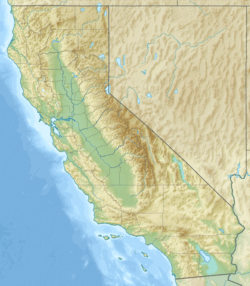Elder Creek (Tehama County) facts for kids
Quick facts for kids Elder Creek |
|
|---|---|
|
Location of Elder Creek in California
|
|
| Country | United States |
| State | California |
| Physical characteristics | |
| Main source | California Coast Ranges Mendocino National Forest 801 ft (244 m) 40°00′48″N 122°33′00″W / 40.01333°N 122.55000°W |
| River mouth | Sacramento River Near Gerber 207 ft (63 m) 40°02′35″N 122°06′57″W / 40.04306°N 122.11583°W |
| Length | 27 mi (43 km) |
| Basin features | |
| Basin size | 150.5 sq mi (390 km2) |
Elder Creek is an important stream located in Tehama County, California. It is a tributary (meaning a smaller stream that flows into a larger one) of the mighty Sacramento River. This creek is special because it only flows during certain times of the year.
Contents
Where Does Elder Creek Begin?
Elder Creek starts in the beautiful Mendocino National Forest. It forms when three smaller streams, called the North, Middle, and South Forks, join together.
How Long is Elder Creek?
From where its three forks meet, Elder Creek flows for about 27 miles (43 km) (that's about 43 kilometers). It travels east until it meets the Sacramento River. This meeting point is close to a town called Gerber.
If you measure from the very beginning of its longest branch, the South Fork, Elder Creek is even longer. It stretches for about 42 miles (68 km) (about 67 kilometers) in total.
What Area Does it Drain?
Elder Creek drains an area of about 150 square miles (390 km2) (around 388 square kilometers). This area is called its watershed. A watershed is all the land where water flows into a particular river or stream.
When Does Elder Creek Flow?
Unlike some rivers that flow all year, Elder Creek is a seasonal stream. This means it only has water flowing in it during certain times. You'll mostly see water in Elder Creek during the cooler, wetter months of winter and spring. During the hot, dry summer, the creek often dries up.
How Did Elder Creek Get its Name?
Elder Creek was named after the elder trees. These trees grow along its banks. In the past, it was also known by a Spanish name, Arroyo de los Saucos. This name also refers to elder trees.


